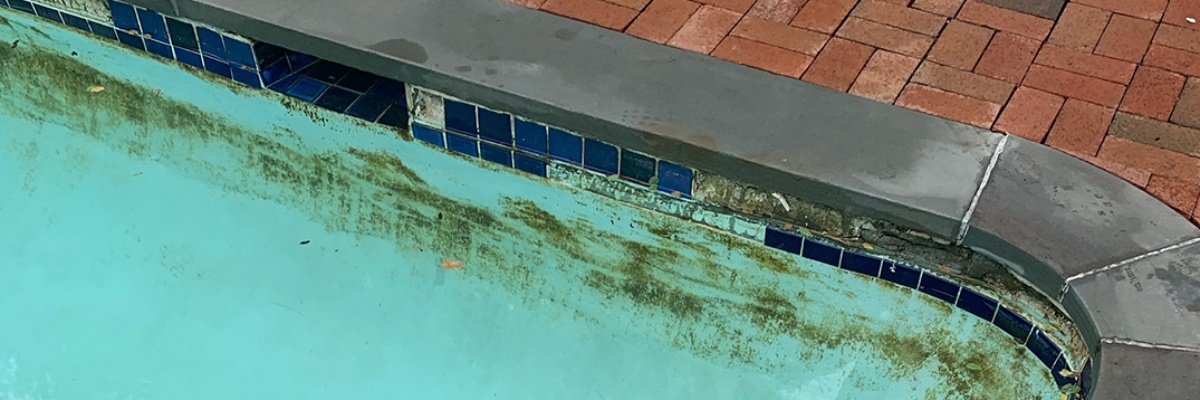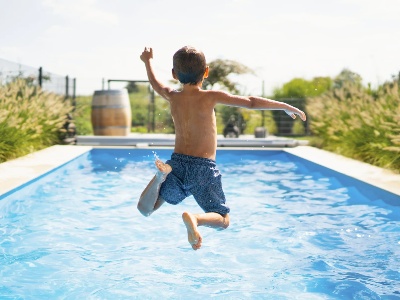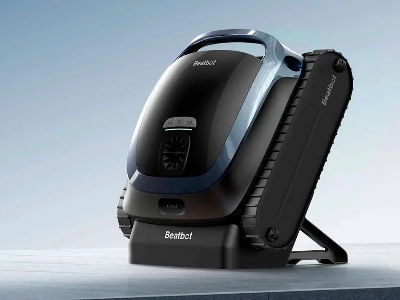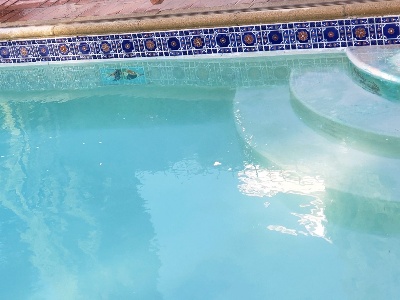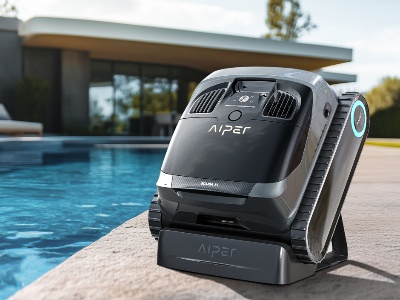There is nothing more frustrating than finding your pool water cloudy, green or slippery underfoot. These signs often betray an algae invasion, a common problem that can quickly become complex if not dealt with effectively. Algae develop in response to an imbalance in the water, insufficient filtration or exposure to too much sunlight. Fortunately, there are simple, quick and sustainable solutions to get rid of them. This article will guide you step by step in identifying the types of algae, the most effective curative treatments and preventive measures to avoid their reappearance.
Understanding the origin of algae to better combat them
Algae thrive in favourable conditions: high temperature, abundant light, stagnant water and chemical imbalance. A poorly maintained swimming pool quickly becomes a breeding ground for algae. There are several types of algae: green (the most common), yellow (or mustard, more resistant) and black (particularly stubborn). Green water is usually the first visible sign, but the presence of a slippery deposit on the sides or bottom should also be a warning. This is most often caused by insufficient chlorine or an incorrect pH level. In addition, there may be inadequate filtration or dead zones in the pool where the water does not circulate properly. Identifying the precise cause allows you to adapt the treatment and avoid costly mistakes. A full water test is therefore the first essential step before any intervention, in order to correctly target the problem and choose the right treatment products.
Shock treatment: your first weapon against algae
Once the algae has been identified, the first response is to carry out a shock treatment. This involves adding a high dose of disinfectant (chlorine or bromine) to eradicate the proliferation within a few hours. It is crucial to carry out this operation at the end of the day to avoid rapid evaporation by UV rays. It is also important to ensure that the pH is well balanced between 7.2 and 7.4 in order to optimise the effectiveness of the chlorine. After treatment, leave the filtration system running continuously for at least 24 to 48 hours. During this period, the water will gradually become clear again, provided that the filtration system is efficient and of a suitable size. To increase the effectiveness of the treatment, the addition of a compatible algaecide may be useful. However, be careful not to overdose it: this could generate foam and make the water milky. In the event of severe infestation, two consecutive treatments may be necessary. Once the water has been clarified, thorough mechanical cleaning is essential to eliminate the residues of dead algae, which are invisible to the naked eye but are still harmful. After a shock treatment, rigorous cleaning is essential. Carefully brush the sides, bottom, stairs and corners of the pool. If not removed, dead algae can grow back. A brush suitable for the surface (liner, tiles, concrete) is recommended for this task. Then vacuum up the deposits with a manual or automatic vacuum cleaner. Models from brands such as Kokido or Bestway offer a good additional solution, but autonomous robot vacuum cleaners are particularly effective for deep cleaning. Robots such as the
BEATBOT AquaSense Pro allow you to clean the bottom and walls effortlessly, filtering fine particles and removing invisible residues. Finally, don't forget to also clean the water line and skimmers, as algae easily attach themselves there. To reinforce the action on the surface, a mobile skimmer robot such as the
iSkim Ultra from BEATBOT can be a formidable solution, in addition to your conventional filtration. Good cleaning is the key to preventing a rapid recurrence.
Optimise filtration to prevent the return of algae
Filtration is the heart of the water maintenance system. Poor circulation favours stagnant areas, where algae develop more easily. After an episode of algae, it is often necessary to clean or replace the filter, as it can become saturated with dead particles. A sand filter will need to be backwashed, while a cartridge filter will need to be dismantled and cleaned with clean water, or even soaked in a descaling solution. Also check that the pump is operating at a flow rate appropriate to the size of the pool. In hot weather or when the pool is used intensively, the filtration system should run for between 12 and 18 hours a day. Some owners even choose to run the pump continuously after a shock treatment, until the water becomes perfectly clear again. To improve circulation, make sure that the delivery nozzles are correctly positioned and that there is enough water for the skimmers to work properly. Good filtration considerably reduces the risk of algae recurring.
Natural prevention and daily treatment
After eliminating the algae, it is essential to keep the water healthy to prevent them from reappearing. This involves regular maintenance and simple but effective actions. Check your pH at least twice a week, especially in summer. Also check the disinfectant level and adjust it if necessary. Use a preventive algaecide once a week, in small quantities. Clean the skimmers and the bottom of the pool regularly, even if it looks clean. Avoid leaving leaves or insects in the water for too long: they bring in organic matter that encourages the growth of algae. Cover your pool when you are not using it for several days. Finally, keep an eye out for warning signs: cloudy water, slippery deposits, discolouration. Prompt action will save you the need for a full treatment. Some connected robots now make it possible to alert you to the state of the water or to launch a targeted cleaning programme. If your budget allows, an autonomous and intelligent model can become a real partner in your anti-algae strategy.
The right equipment makes all the difference
To keep a pool spotless and algae-free, having the right equipment is essential. In addition to filtration and cleaning products, mechanical tools play a crucial role. A high-performance robot vacuum cleaner saves you hours of manual cleaning, while ensuring consistent maintenance, even in hard-to-reach areas. Models such as the BEATBOT AquaSense 2 or the robots offered by Dolphin Maytronics, Zodiac, BWT or Hayward meet different needs depending on the size and complexity of your pool. The surface skimmer is also a key element, not to be neglected. By capturing leaves and suspended impurities, it limits their decomposition and therefore the appearance of algae. For highly exposed or busy pools, a robotic skimmer such as BEATBOT's iSkim Ultra can ensure constant surface cleaning, even between filtration cycles. The equipment does not replace chemical maintenance, but it supports it and makes it much more effective. It is often this balance between chemistry, mechanics and prevention that allows you to fully enjoy your pool all season long. Algae are not inevitable. With the right reflexes, they can be eliminated quickly and effectively, without disrupting the use of your pool for too long. This requires quick action at the first signs, a well-conducted shock treatment, intensive cleaning and well-adjusted filtration. But the key lies above all in regularity. The more you plan ahead, the more you limit the risks. By keeping an eye on your chemical parameters, cleaning your pool regularly and relying on reliable and high-performance equipment - such as BEATBOT robots or complementary maintenance tools - you can be sure of crystal-clear, pleasant water all summer long. Maintenance should not be seen as a chore, but as a simple and controlled task that allows you to enjoy every swim with peace of mind. A well-maintained swimming pool is the guarantee of a successful summer, without algae or unpleasant surprises.

